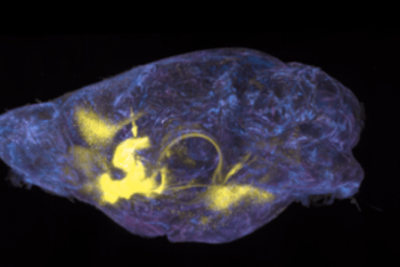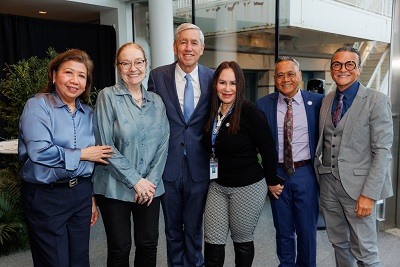Five-year strategic plan is approved by Board of Trustees
A new, five-year strategic plan for the university, developed over the past year by the members of the Strategic Planning Committee with input from the community, was approved by the Board of Trustees at its November 6th meeting. The plan will set a course for new investments in faculty recruitment, technological acquisitions, translational efforts, and other priorities between 2020 and 2024.
The development of the new plan, titled “The Convergence of Science and Medicine,” was overseen by president Richard P. Lifton, who led the committee of 14 faculty members and two administrators through a review of Rockefeller’s strengths, operations, and aspirations. The result was a shift from a major capital project—the cornerstone of the previous strategic plan—to an emphasis on academic programming.
“The convergence of basic science, clinical medicine, and therapeutic discovery has set the stage for exceptional advances that link basic scientific research to the detailed understanding of human disease and the development of novel medicines,” says Lifton. “Rockefeller is particularly well positioned to lead this revolution, given our world-leading faculty, well-established therapeutic development programs, and our outstanding, on-campus research hospital.”
The new strategic plan highlights five priorities critical to maximizing the university’s impact in the coming years:
#1 Investing in the most audacious and original scientists in the world
The plan calls for maintaining the open-search process that has driven faculty recruitment over the past decade and, simultaneously, recruiting a few mid-career faculty in targeted areas. The pace of hiring is consistent with past practice: one to two new heads of laboratory per year, maintaining the number of heads of laboratory at around 75. The plan also underscores the university’s continued commitment to recruitment of exceptional graduate students and postdocs.
#2 Powering the future of basic science through disruptive technologies
The development and early adoption of transformative technologies is a major driver of scientific breakthroughs. In the plan, the committee emphasizes that the university must continue to recognize and quickly seize upon new technologies.
#3 Translating discoveries into innovative diagnostics and therapeutics
“If the product of our science is limited to the pages of biomedical journals, we will not fulfill our mission,” Lifton says. The university will aim to advance its discoveries through translational efforts, supported by initiatives such as the Robertson Therapeutic Development Fund and the Tri-I Therapeutics Discovery Institute, and by strengthening the university’s Office of Technology Transfer. A new Institute for the Convergence of Basic Science and Clinical Medicine will promote opportunities for basic scientists to partner with translational scientists and clinicians, with the ultimate goal of preventing, mitigating, or curing disease.
#4 Catalyzing collaborations, both internal and external, that lead to breakthroughs
Building on previous initiatives, the plan calls for the development of several new interdisciplinary centers and for increasing collaborative efforts locally, nationally, and globally. In keeping with Rockefeller’s model, centers and institutes are not defined by physical spaces but by faculty pursuing shared programmatic goals via new partnerships and increased interactions. Proposed new centers include:
- The Institute for the Convergence of Basic Science and Clinical Medicine
- The Institute for Research in Neurodegenerative Disease
- The Center for the Social Brain
- The Center for Research on Women’s Health
- The Institute for Research in Immunology and Infectious Disease
#5 Enhancing the environment for scientific innovation
The plan emphasizes sustaining the conditions for transformational research, including Rockefeller’s collegial and collaborative culture, its generous support to laboratories along with the technology and instrumentation needed to advance discovery, and maintaining the facilities and infrastructure essential to the scientific operations of the institution. This priority also includes attention to Rockefeller’s physical environment, and the establishment of a cohesive five-year capital plan. The goal is to create an environment conducive to realizing Rockefeller’s mission to do science for the benefit of humanity.


